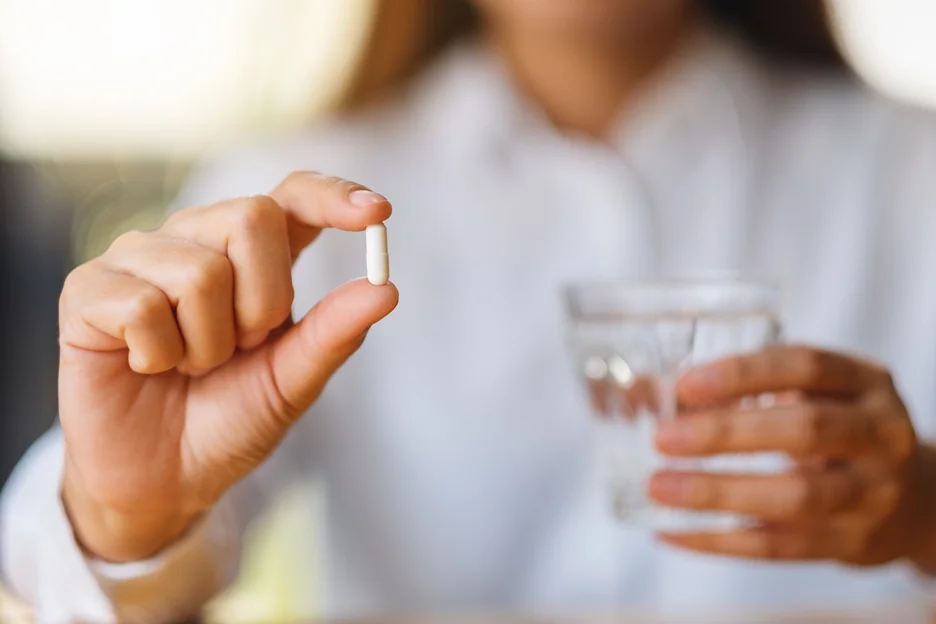DAO and Sulfate Deficiency: What Your Symptoms Are Trying to Tell You
Do you dread mealtimes knowing that even your favorite foods will soon cause flare-ups of headaches, hives, fatigue, nausea, and other unpleasant symptoms? Do you plan your day around the need to be close to a bathroom after eating?
It may be more than just food allergies at play. Deficiencies in two key nutrients—diamine oxidase (DAO) and sulfate—can prevent your body from properly processing histamine, leading to widespread reactions. DAO breaks down histamine from foods while sulfate aids histamine excretion.
Let’s examine how DAO deficiency and insufficient sulfate levels may be interconnected sources of histamine intolerance.
What is DAO and How Does Deficiency Occur?
DAO is an essential digestive enzyme needed to metabolize ingested histamine from food so that it doesn’t enter your general circulation. It performs this key role mostly in your digestive tract or gut mucosa.
DAO deficiency occurs when your body doesn’t produce enough of this vital enzyme to properly break down dietary histamine. This allows excessive histamine to be absorbed from your intestines into your bloodstream.
Since histamine is a vital neurotransmitter involved in immune responses, excess circulating histamine leads to inflammation, allergic reactions, and overstimulation of histamine receptors throughout the body and brain. The result is a wide array of symptoms ranging from migraines to hives to gastrointestinal distress.
Under normal conditions, only about 1% of dietary histamine is absorbed, but with DAO deficiency this can exceed 70% causing circulating histamine levels to skyrocket.
What Causes DAO Deficiency?
DAO deficiency can arise due to various factors. Understanding the root causes can provide insights into its management.
Genetic Factors
Genetic mutations that affect DAO gene expression directly reduce the production of the enzyme within gut mucosa cells. These mutations may run in families.
Genetic mutations can affect DAO gene expression in a number of ways, including:
- Mutations that change the sequence of the DAO gene. This can interfere with the transcription or translation of the gene, leading to reduced production of the DAO protein.
- Mutations that affect the regulation of the DAO gene. This can lead to the gene being expressed at inappropriate times or levels, which can also reduce the production of the DAO protein.
Medications and Lifestyle Choices
DAO inhibition from certain medications like monoamine oxidase inhibitors, antibiotics, or antihistamines which block DAO activity. Excess alcohol and caffeine consumption can also inhibit DAO.
Gut Health Issues
Damage to gut mucosa cells from conditions like leaky gut syndrome, Irritable Bowel Syndrome (IBS), or ulcerative colitis destroys DAO-producing cells. These conditions allow histamine to be absorbed before DAO can metabolize it.
Oxidative Stress
Oxidative stress depletes DAO enzyme activity over time by damaging the mucosal cells that produce it. Factors like infections, aging, smoking, and obesity increase oxidative stress.
Age-Related Decline
DAO production normally decreases with age over time, reducing the ability to break down dietary histamine.
The end result of these issues is a decrease in DAO enzyme activity that allows more histamine to enter circulation and wreak havoc on the body.
DAO Deficiency Explained: What It Means for Your Health

DAO is like our body’s natural cleaner for a substance called histamine. When we don’t have enough DAO, histamine can build up, leading to a range of health problems. While the name “Diamine Oxidase (DAO) deficiency” might sound complicated, it’s simply about our body not having enough of this important cleaner.
When this happens, we might feel unwell or notice certain health issues cropping up. The table below lays out the common signs that our body might be low on DAO and the health problems that can be linked to this deficiency.
Overview of DAO Deficiency Symptoms and Associated Health Conditions
| Symptoms | Potential Cause | Related Health Conditions |
| Headaches, migraines | Excess histamine; inability to break down dietary histamine | Migraines, cluster headaches, tension headaches |
| Fatigue, tiredness, brain fog | Elevated histamine levels affecting the nervous system | Chronic fatigue syndrome, ADHD |
| Nausea, vomiting, diarrhea, abdominal pain | Histamine impact on gastrointestinal motility and secretion | Inflammatory Bowel Disease, Crohn’s disease, ulcerative colitis, gastritis, stomach ulcers |
| Flushing, itching skin, hives, eczema | Histamine release in the skin | Atopic dermatitis (eczema), hives, angioedema |
| Anxiety, depression, irritability | Histamine’s role in neurotransmitter function | Anxiety, depression, mood disorders |
| Asthma, sinus congestion | Histamine-induced bronchoconstriction and increased mucus production | Asthma, allergic rhinitis, sinusitis, COPD |
| Irregular menstrual cycles, low estrogen | Histamine’s influence on hormone production and regulation | Hormonal imbalances, PMS, infertility |
| Muscle pain, joint inflammation | Inflammatory response due to high histamine levels | Fibromyalgia, joint pain, myalgia |
| Food sensitivities, new allergies | Elevated histamine leading to exaggerated immune responses | Food intolerances, food allergies, anaphylaxis |
| Heartburn/GERD | Histamine stimulation of stomach acid production | GERD, gastritis, stomach ulcers |
Testing for DAO Deficiency
Since DAO deficiency is not yet a well-known diagnosis, specialized testing is needed to confirm it. Testing options include:
- Blood tests measuring serum DAO activity: DAO levels below 80 HDU/ml indicate substantial deficiency.
- 24-hour urine testing to assess total histamine output: Excess histamine excretion points to inadequate DAO capacity.
- Small bowel biopsy to directly sample DAO levels and enzymatic activity in the intestinal mucosa.
- Genetic tests to identify mutations affecting DAO enzyme production.
- Diagnostic questionnaires to assess symptoms and severity of histamine intolerance.
DAO deficiency often goes undetected or is misdiagnosed as food allergies, IBS, asthma, anxiety, leaky gut syndrome, migraine disorder, or other chronic conditions. A combination of testing for both enzyme activity and histamine levels yields the most definitive diagnosis.
Treatment and Management of DAO Deficiency
Since DAO deficiency itself is rarely diagnosed, treatment typically targets the management of high histamine levels and associated symptoms:
- DAO enzyme supplements provide replacement enzymes to directly improve the breakdown of dietary histamine. Supplements help restore normal histamine metabolism.
- Antihistamine drugs like loratadine and cetirizine block H1 histamine receptors to reduce allergic-type immune reactions to excess circulating histamine.
- H2-blocking drugs like famotidine help reduce stomach acid production stimulated by histamine.
- A low-histamine diet eliminates histamine-rich foods and prevents intake of excess dietary histamine. Food allergy testing identifies problem foods.
- Mast cell stabilizer drugs like Cromolyn Sodium calm activated mast cells that release histamine during reactions.
- Treatments that heal a “leaky gut” and seal intestinal permeability prevent absorption of histamine.
- Nutritional supplements like quercetin, vitamin C, B6, and magnesium help stabilize mast cells and inhibit histamine release.
- Stress reduction techniques, biofeedback, and lifestyle changes help limit mast cell triggering.
The Science Behind Sulfate
Sulfate is an important mineral with many crucial roles in the body. It is involved in critical physiological processes like detoxification, neurotransmitter synthesis, and production of cartilage.
Sulfate gets activated into sulfuryl groups that bind and deactivate environmental toxins, allowing them to be safely eliminated from the body. Sulfate is also vital for synthesizing brain chemicals and maintaining the protective myelin sheath around neurons.
Additionally, sulfate combines with proteins to form chondroitin sulfate and other glycosaminoglycans needed to produce joint cartilage and mucopolysaccharides that protect organs.
Causes of Sulfate Deficiency
There are several potential causes of insufficient sulfate levels in the body:
- Inadequate dietary intake of sulfur-containing foods like eggs, beef, poultry, legumes, garlic, onions, broccoli, and cruciferous vegetables. This limits available sulfate for critical functions.
- Dysbiosis in gut microbiome, often from overuse of antibiotics, allowing sulfate-reducing bacteria to flourish. These bacteria deplete sulfate supplies in the colon.
- Impaired absorption of sulfate in the gut due to disorders like IBS, leaky gut syndrome, and ulcerative colitis which damage the intestinal lining needed for uptake.
Symptoms Related to Sulfate Deficiency
Deficiency in sulfate can contribute to numerous symptoms and conditions such as:
- Joint pain, inflammation, and arthritis due to lack of building blocks for cartilage and synovial fluid.
- Brain fog, poor memory, and reduced neurotransmitter synthesis from insufficient sulfate for neuron function.
- Headaches and migraines since neurotransmitters are imbalanced.
- Impaired detoxification leading to buildup of chemicals, toxins, and histamine.
- Higher histamine levels due to insufficient sulfurylation and degradation of histamine.
- Compromised immune function and autoimmunity from reduced glutathione production.
Diagnosing Sulfate Deficiency
Sulfate deficiency can be detected through specialized lab tests measuring:
- Serum sulfate levels
- Urinary sulfate excretion over 24 hours
- Hemolyzed serum sulfate testing
- Indirect signs like reduced glutathione and taurine levels
Potential Connection of DAO and Sulfate Metabolism
Research on the Interaction of DAO and Sulfates
There is limited research exploring the direct relationship between diamine oxidase (DAO) and sulfate metabolism. However, some studies suggest a potential interaction:
- DAO utilizes copper and vitamin B6 as cofactors. Sulfate deficiency can deplete copper levels which may impair DAO activity.
- Mast cells release sulfate-activated neurotransmitters like serotonin. DAO limits mast cell activation and histamine release, which may influence sulfate activation.
- Sulfation is needed for DAO to break down histamine. Impaired sulfation could reduce DAO’s enzymatic capacity.
- Production of hydrogen peroxide during DAO’s catabolism of histamine may consume sulfate antioxidants like glutathione.
Impact of DAO Deficiency on Sulfate Pathways
DAO deficiency could hypothetically disrupt sulfate pathways in a few ways:
- Excess histamine may drain sulfur reserves needed for the sulfation of neurotransmitters and detoxification.
- Increased gut inflammation from histamine overload can damage sulfate-absorbing intestinal cells.
- Higher oxidative stress due to uncontrolled histamine can deplete sulfate antioxidants like glutathione.
- Reduced DAO activity results in less hydrogen peroxide production, lowering demand for sulfate antioxidants.
Considerations for Treatment
When DAO deficiency and sulfate insufficiency are both present:
- Work on sealing a “leaky gut” to improve absorption of both histamine and sulfate.
- Increase intake of sulfur-rich foods and/or consider sulfate supplements.
- Monitor sulfate levels when trialing high-dose DAO supplements.
- Address copper deficiency which may hinder DAO activity and sulfate activation.
- Reduce inflammation and oxidative stress to support both DAO and sulfate function.
- Further research is needed on the DAO-sulfate interplay to refine treatment approaches.
DAO and sulfate influence some overlapping pathways, but the clinical significance of their interaction requires more study. A personalized approach is best to balance deficiencies.
Conclusion: Overcoming Diamine Oxidase and Sulfate Deficiency
DAO deficiency and insufficient sulfate levels both play a role in disrupting histamine metabolism and promoting inflammation. Though more research is needed, it appears these two deficiencies may be interconnected in some individuals.
Optimizing sulfate status through dietary sources and targeted supplementation may aid DAO function and histamine tolerance. At the same time, controlling excess histamine with DAO supplementation and antihistamines can support sulfate homeostasis.
A multi-pronged approach addressing gut health, diet, lifestyle, stress reduction, and nutritional support tailored to each individual’s unique deficiencies provides the best chance at overcoming symptoms.
Working with healthcare providers knowledgeable in both histamine intolerance and sulfate deficiencies can help determine the ideal treatment plan.
Discover the Power of DAO-Hist Supplements

Struggling with unexplained symptoms like fatigue, digestive issues, or skin problems?
These could be signs of DAO deficiency—and we have a solution. SeeBeyond Shop’s DAO-Hist Supplements are scientifically formulated to help your body effectively break down histamine. Don’t let DAO deficiency dictate your life; take control with our high-quality, easy-to-use DAO-Hist Supplements.
